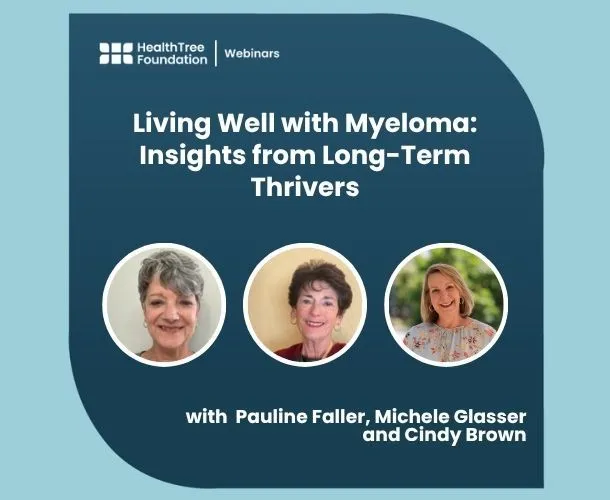ASCO 2021: New Treatment Option for High Risk Myeloma and Plasma Cell Leukemia

A report was presented at the most recent conference of the American Society of Clinical Oncology for newly diagnosed patients with Ultra High-Risk Myeloma (UHiR MM) or Plasma Cell Leukemia (PCL). This report details the outcomes of a new treatment regimen from induction through maintenance gathered from + 100 patients in the United Kingdom. PCL is a rare and aggressive variant of myeloma that affects 0.4 % of myeloma patients (i.e., about 130 newly diagnosed patients in the US per year). For the purpose of this study, UHiR myeloma patients are defined as those with:
- Presence of 2 or more high risk lesions;
- Presence of any one or more of t(4;14), t(14;16), t(14;20), gain(1q), del(1p), del(17p);
- Or gene expression SKY92
You may not be that familiar with the gene expression SKY92. This is a gene signature that is the most reliable prognostic biomarker in multiple myeloma for prediction of high-risk patients with expected survival of less than two years. Those wishing to learn more about SKY92 can do so by referring to the link to a prior post on the Myeloma Crowd by HealthTree.
The protocol that was designed for the patients enrolled in this clinical trial is fully described in clinical trials.gov (NCT03188172) and is summarized below:
| Treatment Step | Drugs Used |
| Induction | Up to 6 cycles of 21 days each:
|
| Auto SCT |
Note: the addition of Velcade shortly after the melphalan infusion and following transplant labels this protocol as ‘augmented stem cell transplant’. |
| Consolidation |
18 cycles of 28 days each:
|
| Maintenance |
Ongoing cycles of 28 days each:
|
The results can be summarized as follows:
| Measure |
All patients at end of induction |
All patients at 100 days post SCT |
PCL only 100 days post SCT |
| Overall response rate (ORR) | 94% | 83% | N/A |
| Complete response (CR) | 22% | 47% | 22% |
| Very good partial response (VGPR) | 58% | 32% | 22% |
| Partial response (PR) | 0 | 5% | 22% |
| Progression of disease | 1% | 10% | 12% |
| Study time point not yet reached, withdrew, became ineligible to continue in the study or passed away. | 5% | 10% | 12% |
| Negative Minimal Residual Disease (MRD -) at less than 1 in 100,000 cells tested | 41% | 64% | N/A |
A few comments:
- The Overall Response Rate and Minimal Residual Disease negative statistics for the cohort of PCL patients was not published. Still, the outcomes for the PCL patients were less favorable than for the whole group that was treated.
- The most frequent grade 3/4 adverse events during induction were neutropenia, thrombocytopenia, and infection
- Grade 3 neuropathy during induction was 3.7 %
The authors concluded the following:
“Response rates were high in this difficult-to-treat patient population, with toxicity comparable to other induction regimens. However, some early progressions highlight the need for innovative approaches to UHiR Newly Diagnosed Multiple Myeloma.”
The high response rates, both during and post induction seen in this protocol, provide some measure of hope for those patients diagnosed with the ‘very difficult to treat’ label. As a PCL patient myself, I fully agree that our small populations of ultra high risk myeloma and plasma cell leukemia can use all the help and attention we can get from both academic institutions and pharma companies.
A report was presented at the most recent conference of the American Society of Clinical Oncology for newly diagnosed patients with Ultra High-Risk Myeloma (UHiR MM) or Plasma Cell Leukemia (PCL). This report details the outcomes of a new treatment regimen from induction through maintenance gathered from + 100 patients in the United Kingdom. PCL is a rare and aggressive variant of myeloma that affects 0.4 % of myeloma patients (i.e., about 130 newly diagnosed patients in the US per year). For the purpose of this study, UHiR myeloma patients are defined as those with:
- Presence of 2 or more high risk lesions;
- Presence of any one or more of t(4;14), t(14;16), t(14;20), gain(1q), del(1p), del(17p);
- Or gene expression SKY92
You may not be that familiar with the gene expression SKY92. This is a gene signature that is the most reliable prognostic biomarker in multiple myeloma for prediction of high-risk patients with expected survival of less than two years. Those wishing to learn more about SKY92 can do so by referring to the link to a prior post on the Myeloma Crowd by HealthTree.
The protocol that was designed for the patients enrolled in this clinical trial is fully described in clinical trials.gov (NCT03188172) and is summarized below:
| Treatment Step | Drugs Used |
| Induction | Up to 6 cycles of 21 days each:
|
| Auto SCT |
Note: the addition of Velcade shortly after the melphalan infusion and following transplant labels this protocol as ‘augmented stem cell transplant’. |
| Consolidation |
18 cycles of 28 days each:
|
| Maintenance |
Ongoing cycles of 28 days each:
|
The results can be summarized as follows:
| Measure |
All patients at end of induction |
All patients at 100 days post SCT |
PCL only 100 days post SCT |
| Overall response rate (ORR) | 94% | 83% | N/A |
| Complete response (CR) | 22% | 47% | 22% |
| Very good partial response (VGPR) | 58% | 32% | 22% |
| Partial response (PR) | 0 | 5% | 22% |
| Progression of disease | 1% | 10% | 12% |
| Study time point not yet reached, withdrew, became ineligible to continue in the study or passed away. | 5% | 10% | 12% |
| Negative Minimal Residual Disease (MRD -) at less than 1 in 100,000 cells tested | 41% | 64% | N/A |
A few comments:
- The Overall Response Rate and Minimal Residual Disease negative statistics for the cohort of PCL patients was not published. Still, the outcomes for the PCL patients were less favorable than for the whole group that was treated.
- The most frequent grade 3/4 adverse events during induction were neutropenia, thrombocytopenia, and infection
- Grade 3 neuropathy during induction was 3.7 %
The authors concluded the following:
“Response rates were high in this difficult-to-treat patient population, with toxicity comparable to other induction regimens. However, some early progressions highlight the need for innovative approaches to UHiR Newly Diagnosed Multiple Myeloma.”
The high response rates, both during and post induction seen in this protocol, provide some measure of hope for those patients diagnosed with the ‘very difficult to treat’ label. As a PCL patient myself, I fully agree that our small populations of ultra high risk myeloma and plasma cell leukemia can use all the help and attention we can get from both academic institutions and pharma companies.

about the author
Paul Kleutghen
I am a patient diagnosed in 2014 with primary plasma cell leukemia (pPCL), a rare and aggressive variant of multiple myeloma and have been very fortunate to find successful treatment at the division of Cellular Therapy at the Duke University Cancer Institute. My wife, Vicki, and I have two adult children and two grandsons who are the ‘lights of our lives’. Successful treatment has allowed Vicki and I to do what we love best : traveling the world, albeit it with some extra precautions to keep infections away. My career in the pharmaceutical industry has given me insights that I am currently putting to use as an advocate to lower drug pricing, especially prices for anti-cancer drugs. I am a firm believer that staying mentally active, physically fit, compliant to our treatment regimen and taking an active interest in our disease are keys to successful treatment outcomes.
More on Treatment Advances
Trending Articles




Get the Latest Multiple Myeloma Updates, Delivered to You.
By subscribing to the HealthTree newsletter, you'll receive the latest research, treatment updates, and expert insights to help you navigate your health.
Together we care.
Together we cure.
3x Faster.












